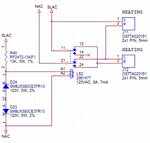shmuelcohen
Newbie level 3
Help solve the problem.
I have a relay that should switch at 220V (COM from NC to NO), and at 110V remain unchanged (COM remain on NC).
I have a relay that should switch at 220V (COM from NC to NO), and at 110V remain unchanged (COM remain on NC).
